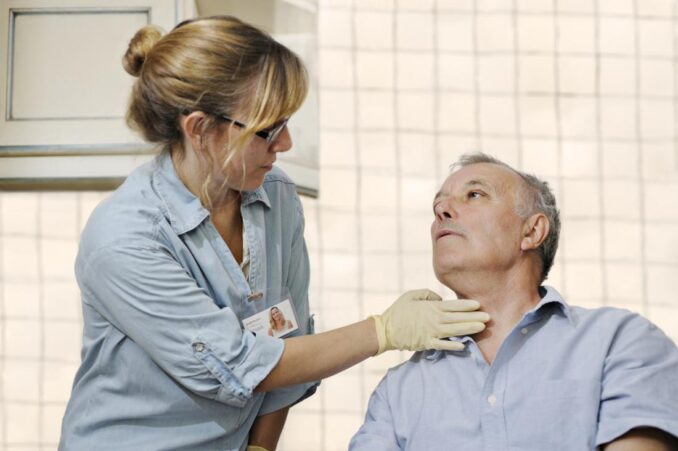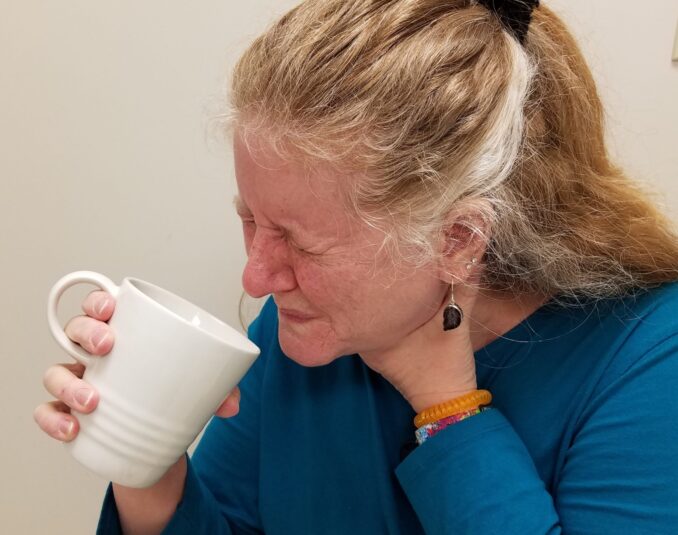Caring for an elderly family member or an elderly person in general is a rewarding yet very tough job for the majority of people.
When it comes to treating and understanding common disorders that elderly people or those who have neurodegenerative disorders may suffer from, dysphagia is probably going to be at the top of the list.
This is a disorder that can cause issues with swallowing food and has many causes. Because there is now an aging population, it is becoming more well-researched and has better treatment options, as well as long-term outcomes for those who suffer from it.
It can, of course, be very worrying to see somebody who is suffering from dysphagia and the key thing you can do as a carer or somebody who is looking after an elderly relative is to know as much as you can about this disorder. So, this brief carer’s guide to dysphagia aims to answer as many questions as possible.
What Is Dysphagia?

Source:pinterest.com
As mentioned earlier, dysphagia is an issue with swallowing food.
The swallowing of food is not the straightforward process as it seems to be, and there are actually 4 stages.
Firstly, you smell the food and put it into your mouth and prepare it for swallowing by chewing it. Your tongue then moves the food or the drink to the back of the mouth, where it begins to move through your throat to your food pipe, where it will reach the stomach. The food pipe is their esophagus, and a flap in the throat, the epiglottis, moves to close over and protect your airways to stop the food from getting into the lungs. The muscles and the esophagus squeeze the food down the pipe to the bottom, moving the food to the stomach.
Dysphagia is an issue with one of the stages in this process or multiple stages. Based on the type of dysphagia that your loved one has, there will be different treatment outcomes. One of the core features of dysphagia is weight loss, but there are many types of food specifically designed for dysphagia, such as the thickeners found at SimplyThick, which can help to keep the weight of your loved one in the normal range.
Symptoms To Look Out For

Source: medicalnewstoday.com
There are some symptoms to look out for when it comes to dysphagia. As mentioned earlier, one of the first ones is weight loss and difficulty with swallowing food. This can present as discomfort or a feeling that food is stuck in the throat. As well as this, somebody who is suffering from dysphagia may experience heartburn and drool; this is usually caused by acid reflux and is actually an informative diagnostic tool, as it points to an issue with the lower esophageal sphincter.
Causes of Dysphagia

Source:facebook.com
There are many causes of dysphagia, so when the person you are caring for begins to suffer from symptoms, they should be assessed by a doctor to determine the cause. In some people, it may be a long-term symptom following an event like a stroke and someone who has multiple sclerosis or Parkinson’s, there is a higher chance that they will develop dysphagia.
Some types of dysphagia may also point to an issue with the throat itself; there may be a blockage caused by a tumor or growth, or the esophagus itself may simply be becoming thinner. These are typically resolved with surgery.
There is also some evidence that points to a genetic component in dysphagia, especially if it is caused by an issue related to the lower esophageal sphincter becoming either stuck or open, causing acid to rise into the esophagus.
Foods Options
There are many food options available for somebody that has dysphagia. You should aim to give the person you are caring for wetter foods and eliminate dry foods from their diet. Softer foods, as well such as mashed potato, porridge, and even pancakes that are drenched in syrup, will help with caloric intake and will also be soft enough to swallow. You can incorporate meats and fish into their diet as well, provided that these are cut down to the correct size for hassle-free swallowing.
Drinks will usually need to have additional nutrients and minerals mixed into them, which can make them slightly thicker. You will need to ensure that the person you are caring for is well-hydrated to prevent them from becoming unwell.
Treatment Options

Source: gmjournal.co.uk
Treatment options for dysphagia typically include diet modification in the first instance. This is ideal if the dysphagia is deemed to not be permanent and can help the person maintain their weight in the interim. If it is found that it may be a more long-term problem, then a doctor or speech and language therapist may recommend the placement of a nasogastric tube or a percutaneous endoscopic gastrostomy (PEG) tube. If the issue is deemed to be semi-permanent, medical teams are more likely to fit a nasogastric tube, as this is less invasive than a PEG tube and does not require surgery.
If it is found via X-ray that the cause of the dysphagia is due to a growth in the throat, then this will need to be removed with surgery. Surgery may also be required if the dysphagia is due to the esophagus becoming slimmer.
Long-Term Prognosis
The long-term prognosis of this disorder varies based on the underlying cause. If it is deemed to be temporary, it should begin to show signs of improvement in a few weeks. For more long-term cases, it will require management with one of the aforementioned feeding tubes and regular assessments with a speech and language therapist. But the overall goal is to ensure that the person you are caring for maintains their weight, remains active, and is able to live their life with minimal disruption, so it will require regular visits to see a doctor to manage.
If you have any questions or queries relating to caring for someone who has dysphagia, please talk to a doctor or medical staff as soon as possible.





